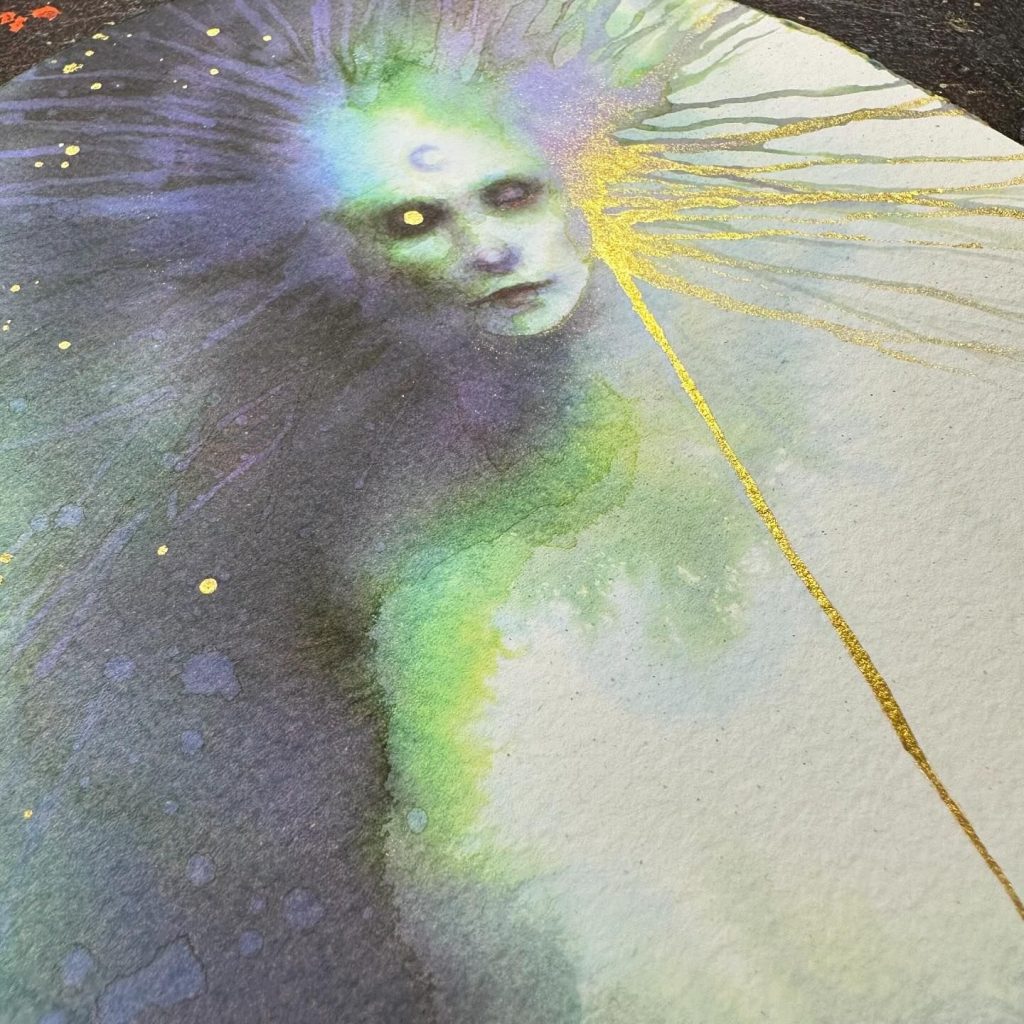Iris of occultation: In the enchanting realm of relationships, some couples possess a mystique that captivates and intrigues, much like the phenomenon known as the iris of occultation. Those whose connections are often hidden from plain sight yet reveal profound truths about love and partnership. Just as an occultation can obscure celestial bodies while simultaneously unveiling their unique characteristics, these remarkable duos challenge conventional notions of romance and companionship.
From unexpected pairings that defy societal norms to love stories shrouded in secrecy, we’ll explore the dynamics that make these relationships both extraordinary and illuminating. Join us as we lift the veil and uncover the secrets of these captivating couples, revealing the beauty that lies within their shared journeys.
The Science of Occultation in Astronomy

The Science of Occultation in Astronomy delves into how celestial bodies interact. When one body hides another, unique data is revealed. For instance, when a planet occultates a star, astronomers can measure the star’s diameter precisely. This phenomenon aids in understanding the composition of planetary atmospheres.
Additionally, occultations help map the edges of rings around planets like Saturn. Observing these events is like getting a natural X-ray of the sky. Interestingly, even small objects like asteroids can occult stars. This provides valuable information about their shape and size. High-speed cameras and telescopes are crucial tools in capturing these fleeting moments. Overall, the science behind occultation enriches our knowledge of the universe and its many wonders.
Occultation in Mysticism and Hidden Knowledge

Occultation in Mysticism and Hidden Knowledge unveils the interplay between visible and invisible realms. In mysticism, occultation signifies the veiling of esoteric wisdom. Ancient traditions often speak of hidden truths guarded by mystical forces. For example, secret societies use occultation to preserve sacred knowledge.
The concealment of spiritual insights ensures they are revealed only to the initiated. Furthermore, occultation symbolizes the journey inward, delving into the subconscious mind. This inward path uncovers hidden potential and profound understanding. Mystics believe that what is concealed holds transformative power.
Through meditation and rituals, they seek to pierce the veil of the ordinary world. Transitioning from ignorance to enlightenment often involves deciphering these concealed mysteries. Ultimately, occultation in mysticism underscores the duality of knowledge—hidden yet ever-present.
Fictional Interpretations of “Iris of Occultation”

- A Mysterious Character
In many fantasy novels, the “Iris of Occultation” could be a character with enigmatic powers. This figure often possesses hidden knowledge or abilities, making them crucial to the plot’s unfolding.
- Magical Artifacts
Often portrayed as a mystical artifact, the “Iris of Occultation” could grant its bearer the ability to see hidden truths. Authors use it to add layers of mystery and adventure to their narratives.
- Secret Societies
In thriller and adventure stories, secret societies may covet the “Iris of Occultation.” It serves as a key to unlocking ancient secrets or lost wisdom, driving the protagonists on a quest.
- Portal to Other Realms
Some science fiction tales describe the “Iris of Occultation” as a portal. This gateway allows characters to travel between dimensions, revealing hidden universes and alternate realities.
- Symbol of Transformation
In literary fiction, it might symbolize a character’s internal transformation. The journey to uncover the “Iris of Occultation” often mirrors the protagonist’s path to self-discovery and enlightenment.
- Legend and Lore
The “Iris of Occultation” often appears in folklore as a legendary object. Passed down through generations, its true nature and power are revealed only to the worthy.
Historical Instances of Occultation Events

Historical instances of occultation events have fascinated astronomers for centuries. In 1717, Edmond Halley observed the occultation of the star Aldebaran by the Moon. This event provided crucial insights into the Moon’s motion. Transitioning to the 19th century, the occultation of Saturn by the Moon in 1889 was meticulously recorded, revealing detailed observations of Saturn’s rings.
In more recent history, the 1983 occultation of a star by Neptune allowed scientists to confirm the presence of Neptune’s faint rings. Additionally, the 2002 occultation of a star by the asteroid 345 Tercidina enabled astronomers to refine its size and shape measurements. Each of these events, among others, has significantly advanced our understanding of the cosmos. Through such occultations, the intricate dance of celestial bodies continues to be unveiled.
The Symbolism of Iris in Different Cultures

- Ancient Greece:
Iris, the goddess of the rainbow, connected gods and humans. She was a messenger, bridging realms with her vibrant arc. Iris flowers were planted on graves to summon her guidance.
- Egyptian Mythology:
The eye of Horus, symbolizing protection and health, resembles the iris. This sacred emblem held great importance in rituals and amulets.
- Japanese Tradition:
Irises are linked to bravery and heroism. Samurai adorned their armor with iris motifs for strength in battle. The flower also represents purification in traditional festivals.
- Native American Lore:
Irises symbolize power and positive energy. They believe the flower wards off evil spirits and brings harmony.
- Christian Symbolism:
The iris is associated with the Virgin Mary. It represents purity, suffering, and resurrection. Often, it is depicted in religious artwork to signify these virtues.
Practical Applications of Occultation Studies
- Mapping Celestial Bodies:
Occultation helps astronomers precisely map the edges of celestial bodies. This includes planets, moons, and even asteroids, providing critical data for space missions.
- Studying Atmospheres:
By observing stars as they pass behind planets, scientists analyze atmospheric composition. This method has been vital in detecting exoplanets and their potential habitability.
- Satellite Navigation:
Occultation data enhances satellite navigation systems. The information improves the accuracy of GPS and other location-based technologies.
- Predicting Natural Events:
Occultation assists in predicting solar and lunar eclipses. This knowledge is essential for both scientific study and public awareness.
- Astronomical Calibration:
Occultation observations help calibrate astronomical instruments. This ensures more accurate readings in various space research projects.
- Historical Insights:
Studying past occultation events offers insights into historical astronomy. This helps modern scientists understand how celestial observations were conducted in earlier eras.
- Innovative Techniques:
Highspeed cameras and advanced telescopes capture occultation events. These tools push the boundaries of what we can learn from the cosmos.
The Role of Occultation in Literature and Art
- Symbol of Hidden Truths:
In literature, occultation often symbolizes concealed knowledge. Authors use it to represent secrets awaiting discovery.
- Metaphorical Veiling:
Poets employ occultation to depict the veiling of emotions. This adds layers of meaning to their verses, creating depth and intrigue.
- Artistic Expression:
Painters and sculptors incorporate occultation to evoke mystery. Shadows and hidden elements draw viewers into the artwork, inviting them to uncover deeper significance.
- Narrative Device:
In storytelling, occultation acts as a plot device. Characters often transform during moments of revelation, driven by hidden truths.
- Cultural Influence:
Occultation themes appear in diverse cultural artworks. From ancient myths to modern-day comics, the concept bridges different artistic expressions.
The Iris as a Metaphor in Psychology
In psychology, the iris metaphor captures the complexity of the human mind. Like an iris regulating light, it symbolizes how we filter experiences. Emotions, memories, and thoughts pass through, shaping our perception. The iris also represents personal growth. As we gain wisdom, our mental aperture widens, allowing more insights to illuminate our path. Conversely, trauma or stress can constrict this aperture, blocking clarity.
This metaphor helps therapists explain cognitive and emotional processes. For instance, it illustrates how self-awareness can expand our understanding of inner conflicts. Additionally, the iris signifies the duality of exposure and protection. We decide what to reveal and what to conceal, navigating social interactions. Therefore, using the iris as a metaphor offers a vivid, relatable way to discuss mental and emotional health.
Future Research and Discoveries in Occultation
Occultation research continues to evolve with technological advancements. High-speed cameras and adaptive optics enable precise measurements. These tools offer clearer insights into celestial bodies’ atmospheres and structures. Future missions aim to observe occultations from space, reducing atmospheric distortion. Collaboration among international observatories will expand our data pool. New algorithms will enhance the accuracy of shape and size estimations for asteroids.
Emerging telescopes like the James Webb Space Telescope will provide unprecedented detail. Additionally, occultation studies could reveal more about exoplanet atmospheres, aiding the search for habitable worlds. By integrating AI, researchers can process vast amounts of occultation data swiftly. These innovations promise to uncover new celestial phenomena, deepening our understanding of the universe. Exciting discoveries await as we refine our observational techniques and expand our exploration.
Frequently Asked Questions About Iris Of Occultation
The Iris of Occultation is a symbolic concept representing hidden truths and revelations. It can be related to celestial events in astronomy, esoteric knowledge in mysticism, or fictional elements in literature and art.
Occultation provides critical data by observing celestial bodies as they pass behind others. This helps scientists measure sizes, shapes, and atmospheres, offering insights into planetary rings, asteroid dimensions, and even exoplanetary atmospheres.
In various cultures, the iris symbolizes diverse concepts such as connection between realms in Greek mythology, protection in Egyptian mythology, bravery in Japanese tradition, harmony in Native American lore, and purity in Christian symbolism.
In literature and art, occultation often symbolizes hidden knowledge or emotions. Authors and artists use it as a narrative device to add depth, intrigue, and transformation, inviting audiences to uncover concealed layers of meaning.
Conclusion About Iris Of Occultation
The Iris of Occultation serves as a fascinating symbol of revelation and concealment. It intertwines celestial phenomena with hidden knowledge, making it a powerful metaphor in various contexts. In astronomy, occultation events unveil intricate details about the universe, while in mysticism, they represent the veiling of profound truths. Fictionally, the Iris of Occultation enriches narratives with mystery and depth, captivating readers and viewers alike.
Across different cultures, the iris embodies diverse meanings, from protection to bravery. Future research in occultation promises exciting discoveries, further expanding our understanding. Ultimately, the Iris of Occultation reminds us that what is hidden often holds great significance, urging us to look beyond the surface and explore the depths of both the cosmos and our inner selves.
Hey, Molar is the voice behind this all-encompassing blog, sharing expert insights and practical advice on business, real estate, and more. Dedicated to helping you navigate the complexities of these fields, Kelly provides the latest trends, in-depth analyses, and creative strategies to elevate your ventures.
